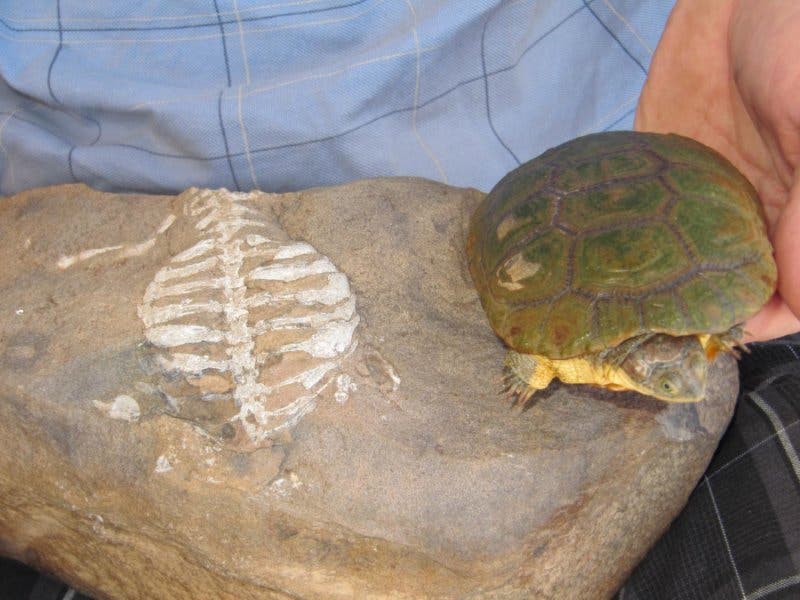Although it might seem obvious to say that the function of the turtle shell is protection – and for modern turtles it is – new research suggests that these shells did not originally evolve for the purpose of vital organ protection.

Image credit Luke Norton
The function of any specific biological trait can change as evolution progresses. Take a look at birds – feathers are believed to have originally evolved for the purpose of keeping warm and attracting the opposite sex. Now, modern birds use them for flying.
In the new study, the team examined a fossil specimen of Eunotosaurus africanus, the oldest known turtle ancestor. This extinct species comes from South Africa and represents the evolutionary point where turtles began to develop early shell characteristics.
Examination of the E. africanus’s wide, flat ribs – believed to be the first step towards the evolution of the turtle shell – revealed that they would have posed numerous problems, including a stiffened torso and interference with breathing.
“The integral role of ribs in both locomotion and breathing is likely why we don’t see much variation in the shape of ribs,” said Tyler Lyson, of the Denver Museum of Nature and Science and lead author of the study. “Ribs are generally pretty boring bones. The ribs of whales, snakes, dinosaurs, humans, and pretty much all other animals look the same. Turtles are the one exception, where they are highly modified to form the majority of the shell.”
Further examination of the E. africanus specimen shed more light on the specimen’s notable features, including its unique skull shape, hands larger than its feet and shoulder blades and forearm with large muscle attachment points, indicating that it was a digger.
Considering the presence of all of these features, the team believes that the broad ribs likely served as a “stable base on which to operate a powerful forelimb digging mechanism,” suggesting that the early stages of the turtle shell were an adaptation for digging before they evolved to serve protective purposes.
Journal Reference: Fossorial Origin of the Turtle Shell. 14 July 2016. 10.1016/j.cub.2016.05.020









